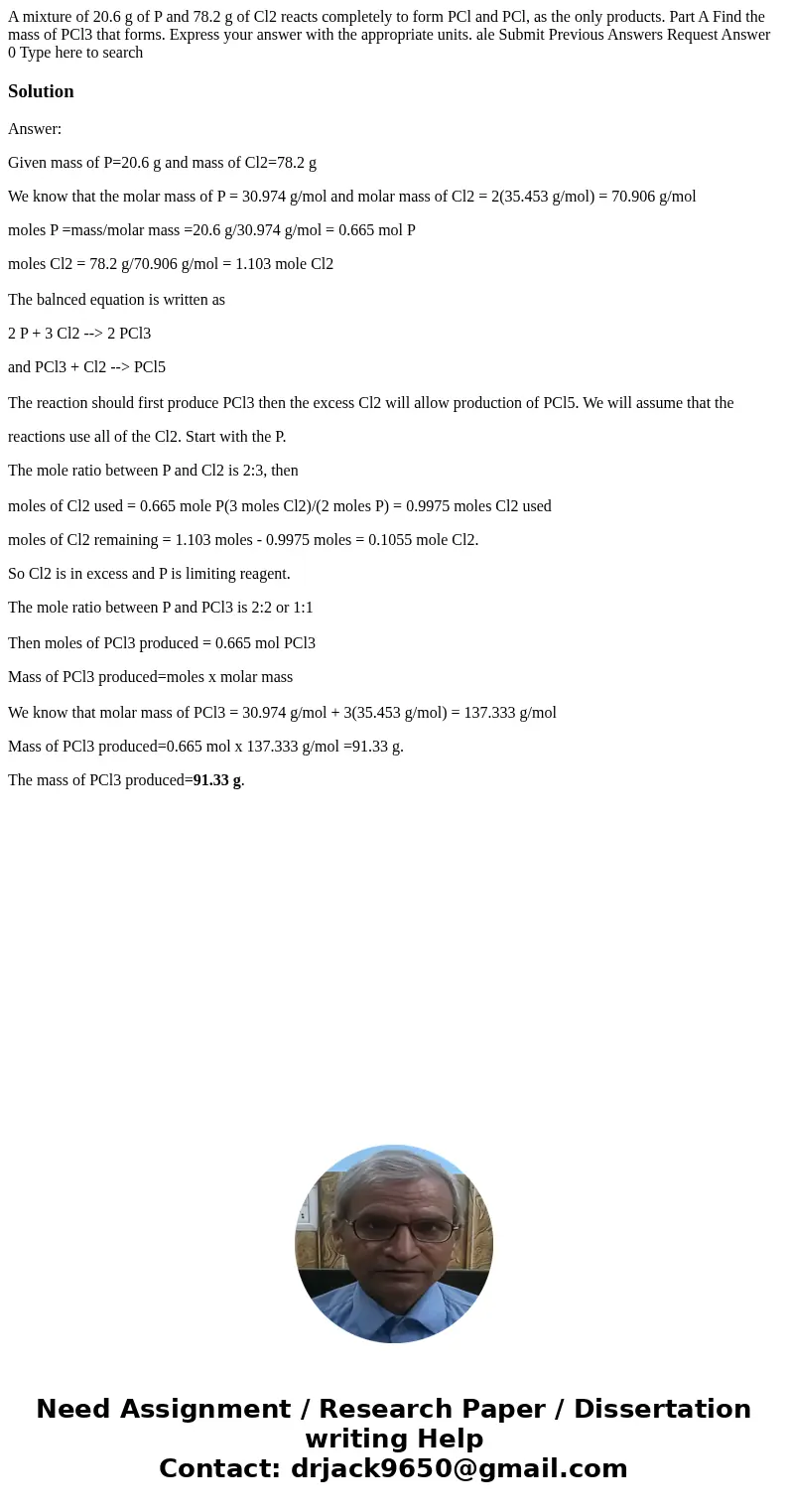A mixture of 206 g of P and 782 g of Cl2 reacts completely t
Solution
Answer:
Given mass of P=20.6 g and mass of Cl2=78.2 g
We know that the molar mass of P = 30.974 g/mol and molar mass of Cl2 = 2(35.453 g/mol) = 70.906 g/mol
moles P =mass/molar mass =20.6 g/30.974 g/mol = 0.665 mol P
moles Cl2 = 78.2 g/70.906 g/mol = 1.103 mole Cl2
The balnced equation is written as
2 P + 3 Cl2 --> 2 PCl3
and PCl3 + Cl2 --> PCl5
The reaction should first produce PCl3 then the excess Cl2 will allow production of PCl5. We will assume that the
reactions use all of the Cl2. Start with the P.
The mole ratio between P and Cl2 is 2:3, then
moles of Cl2 used = 0.665 mole P(3 moles Cl2)/(2 moles P) = 0.9975 moles Cl2 used
moles of Cl2 remaining = 1.103 moles - 0.9975 moles = 0.1055 mole Cl2.
So Cl2 is in excess and P is limiting reagent.
The mole ratio between P and PCl3 is 2:2 or 1:1
Then moles of PCl3 produced = 0.665 mol PCl3
Mass of PCl3 produced=moles x molar mass
We know that molar mass of PCl3 = 30.974 g/mol + 3(35.453 g/mol) = 137.333 g/mol
Mass of PCl3 produced=0.665 mol x 137.333 g/mol =91.33 g.
The mass of PCl3 produced=91.33 g.

 Homework Sourse
Homework Sourse